Northern Sky Narrowband Survey
A survey of the northern sky, focusing on emission lines of HII (656.3 nm), OIII (500.7 nm), and SII (671.7 nm and 673.0 nm), but also collecting continuum data, started at the end of 2018. The entire northern hemisphere down to DEC=-16° is recorded.Early results from selected regions can be found in the wide field nebulae section. Any of these images show faint nebulae that haven't been cataloged before (which does not mean that they are unknown). A preliminary list of these objects can be found in a GitHub repository.
A first data release with a complete set of Hα and low-resolution continuum images (instruments 1-4, see below) is scheduled for the end of 2024.
Below are two tables. The first one describes the different instruments, and the second one lists how many of the instruments from the first table are active in which period.
| Instrument index | Emission line, Bandwidth / Passband / Filter | Field of view | Aperture | Resolution | Comment |
|---|---|---|---|---|---|
| 1 | 656.3 nm (Hα), 3.5nm | 7.6° × 5.8° | 5 cm | 9" (FWHM) | Panasonic MN34230 sensor, f=135 mm lens |
| 2 | Bayer CFA + Light pollution filter | 15.5° × 10.3° | 7 cm | 17" (FWHM) | DSLR camera, f=135 mm lens |
| 3 | 656.3 nm (Hα), 3.5 nm | 7.6° × 5.8° | 6 cm | 9" (FWHM) | Panasonic MN34230 sensor, f=135 mm lens |
| 4 | 656.3 nm (Hα), 35 nm | 7.6° × 5.8° | 5 cm | 9" (FWHM) | Panasonic MN34230 sensor, f=135 mm lens. Used for exact continuum measurement (wide passband centered to emission line). |
| 5a | 410 nm to 550 nm (SDSS G') | 6.8° × 4.5° | 10 cm | 7" (FWHM) | Sony IMX455 sensor, f=300 mm lens |
| 5b | 555 nm to 650 nm (SDSS R' + 400 nm to 650nm IR-cut) | 6.8° × 4.5° | 10 cm | 7" (FWHM) | Sony IMX455 sensor, f=300 mm lens |
| 5c | 695 nm to 845 nm (SDSS I') | 6.8° × 4.5° | 10 cm | 7" (FWHM) | Sony IMX455 sensor, f=300 mm lens |
| 6a | 505.7 nm ([OIII]), 4 nm | 10° × 6.8° | 6 cm | 10" (FWHM) | Sony IMX571 sensor, f=135 mm lens |
| 6b | 671.7 nm and 673.0 nm ([SII]), 4 nm | 10° × 6.8° | 6 cm | 10" (FWHM) | Sony IMX571 sensor, f=135 mm lens |
| Instrument index: | 1 | 2 | 3 | 4 | 5a | 5b | 5c | 6a | 6b |
|---|---|---|---|---|---|---|---|---|---|
| Nov 2018 to Apr 2020 | 4 | 2 | |||||||
| Apr 2020 to Jul 2020 | 1 | 2 | 3 | ||||||
| Jul 2020 to Jan 2022 | 2 | 3 | 1 | ||||||
| Jan 2022 to Sep 2022 | 2 | 3 | 1 | 1 | 1 | 1 | |||
| Sep 2022 to Dec 2023 | 3 | 1 | 1 | 1 | 1 | ||||
| Dec 2022 to Apr 2023 | 3 | 1 | 1 | 1 | 1 | 1 | 1 | ||
| Apr 2023 to Jan 2024 | 3 | 1 | 1 | 1 | 1 | 2 | 3 | ||
| Since Jan 2024 | 3 | 1 | 1 | 1 | 1 | 3 | 3 |
Images of the instruments
Below are a few photos of the instruments. Click on the images for higher resolution versions.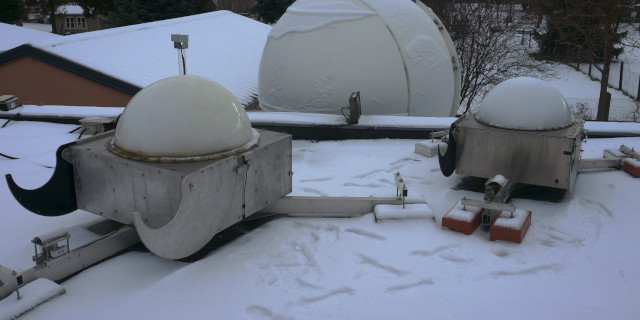
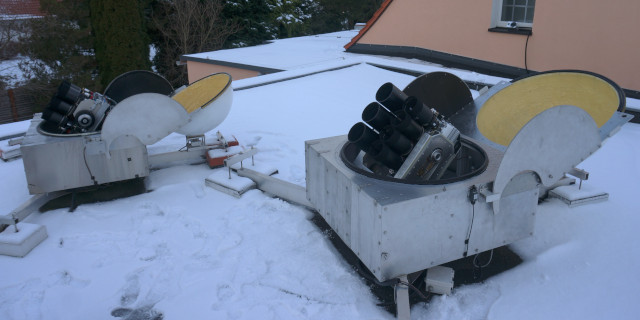
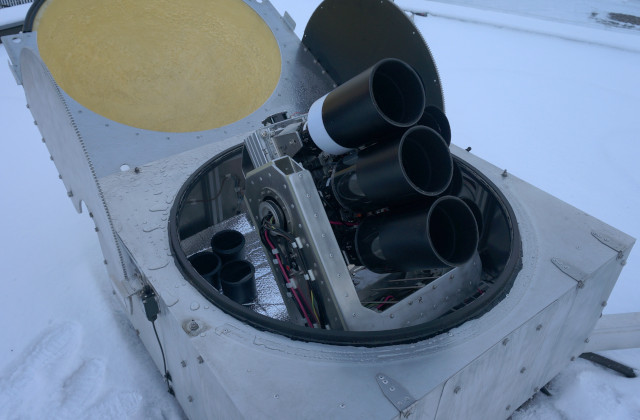
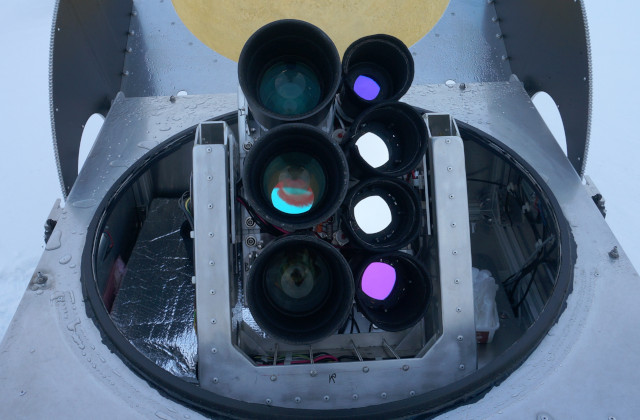
![Array of the Northern Sky Narrowband Survey containing [OIII] and [SII] instruments](sw2-1-640.jpg)
![Array of the Northern Sky Narrowband Survey containing [OIII] and [SII] instruments](sw2-2-640.jpg)
Selected results
Below are selected result. Click on the images for detailed descriptions and other views.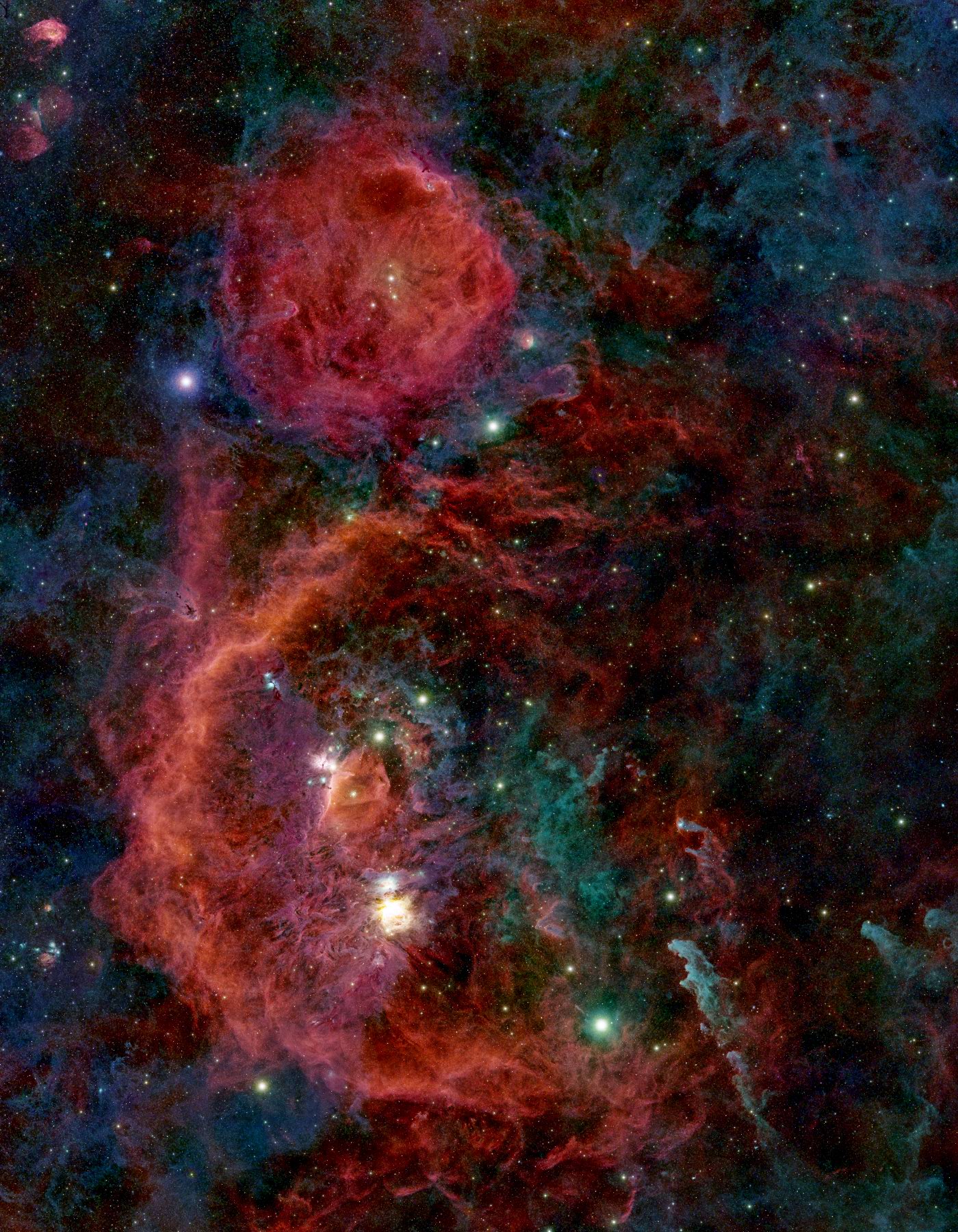
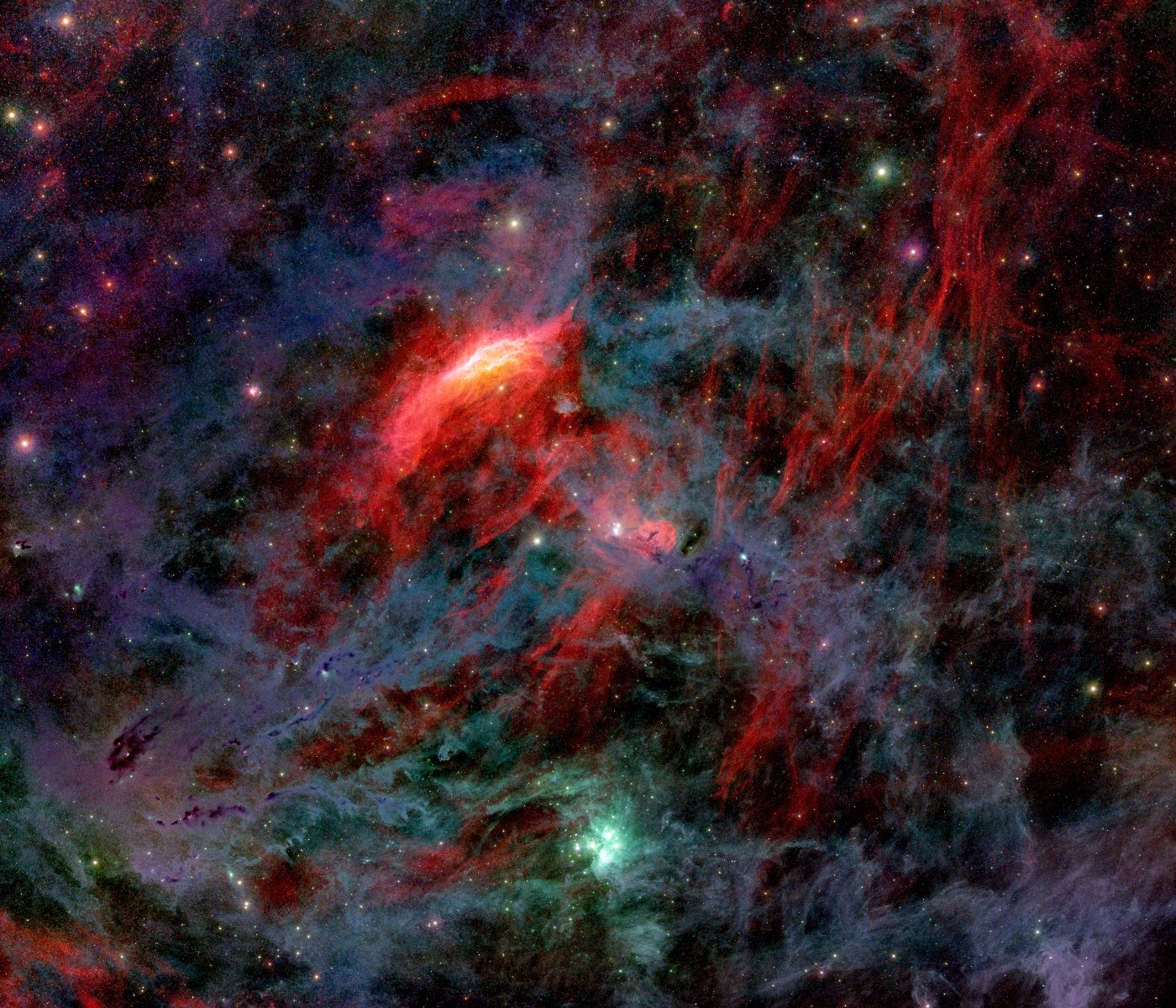
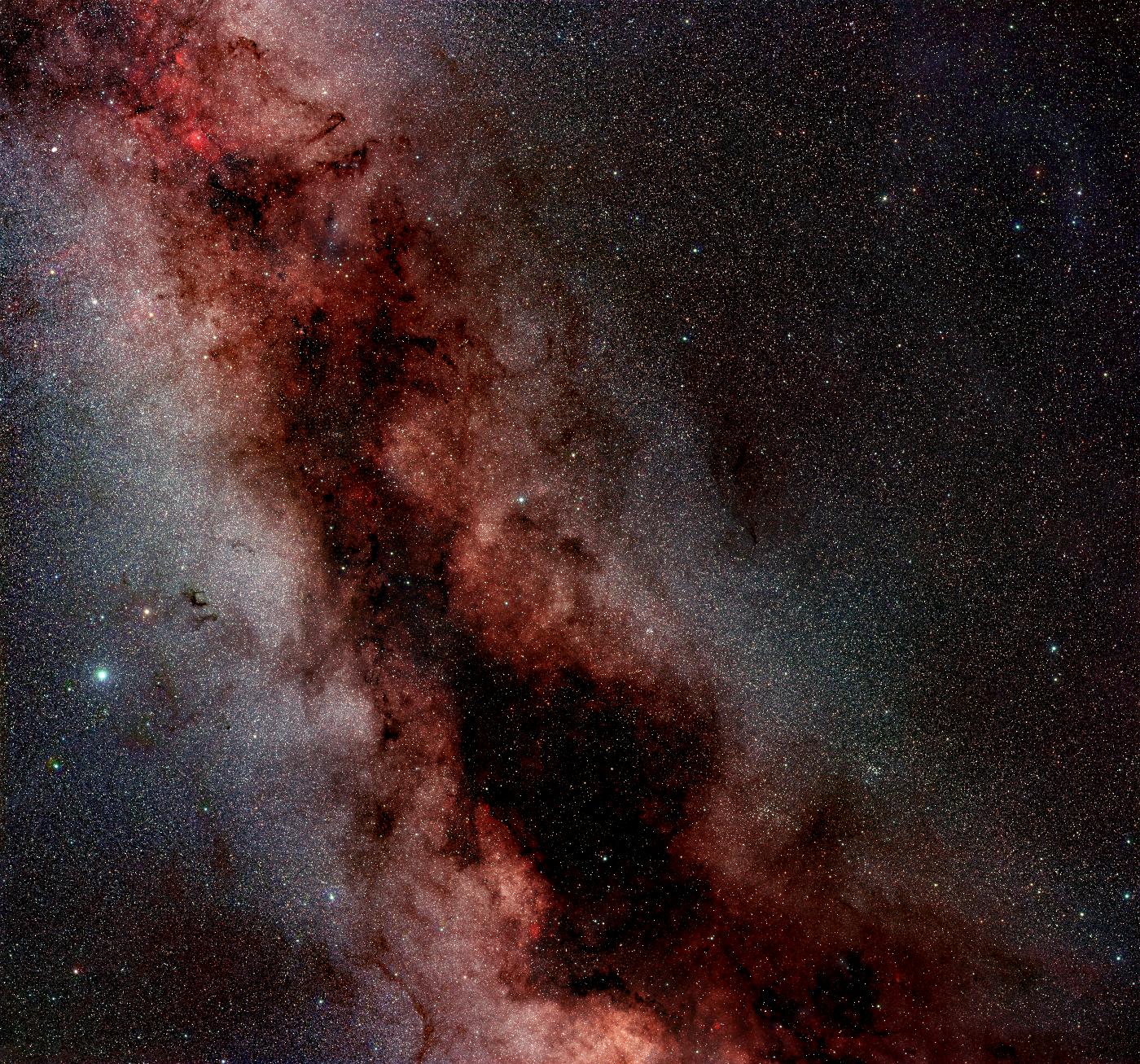
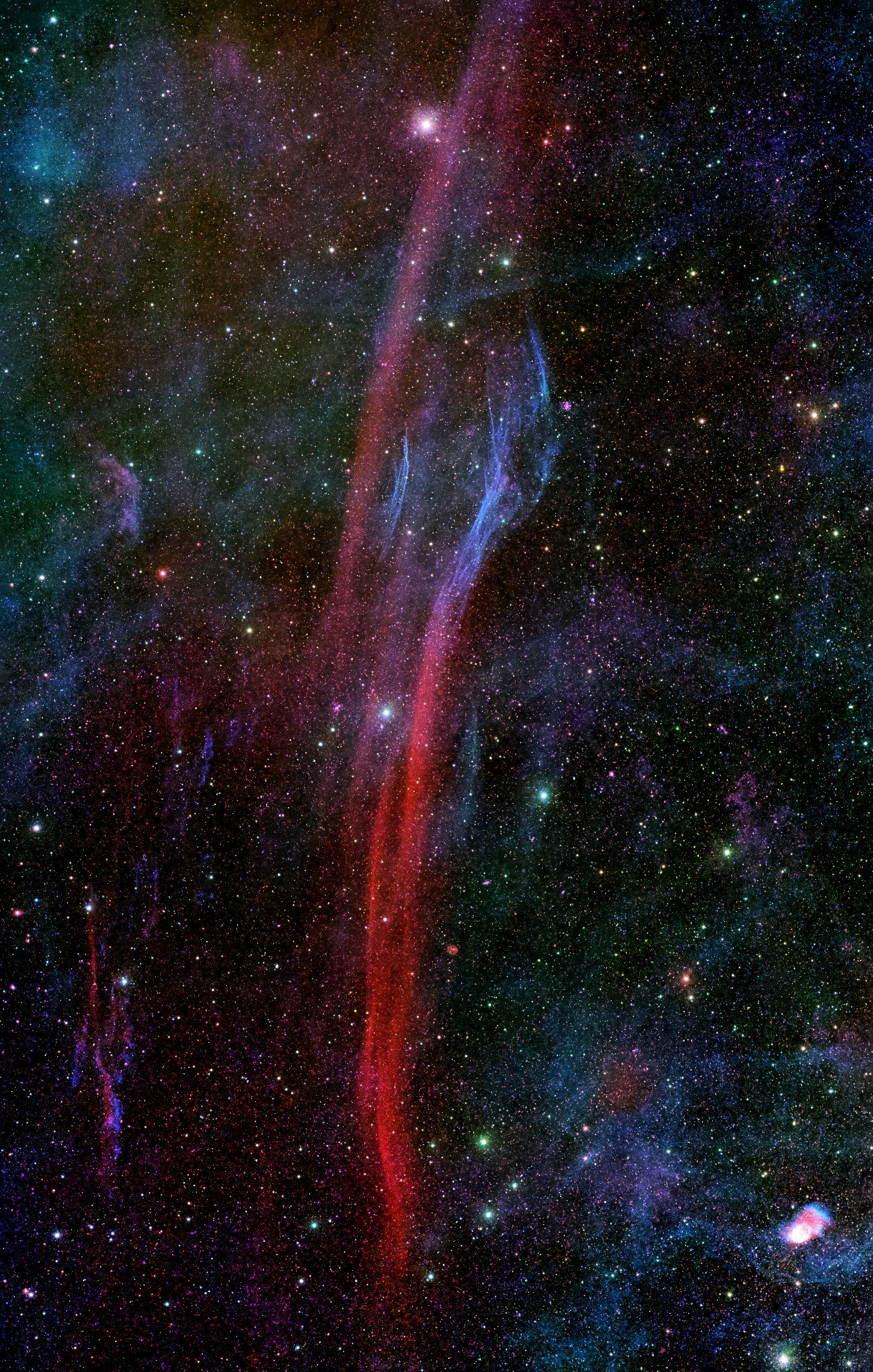
Interestingly, the arc has been detected in the preview images of the first clear night after the camera array reached its full configuration. Furthermore, it is the first image that contains data from all three emission lines. So, this detection can be seen as the first light of the full array configuration.